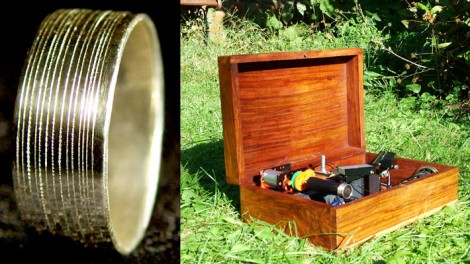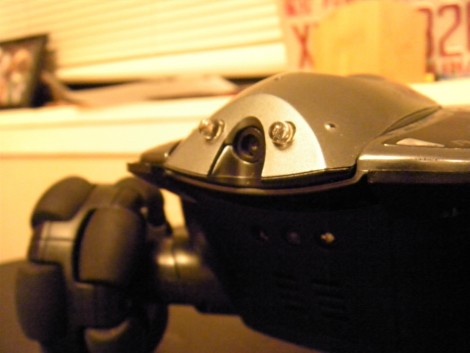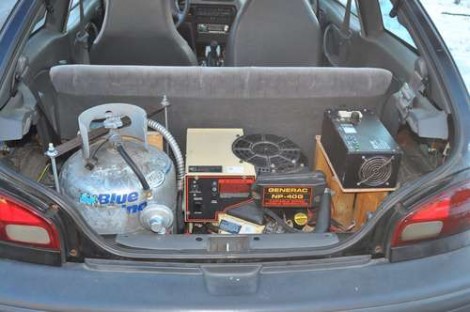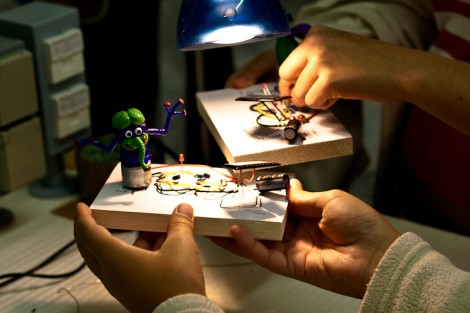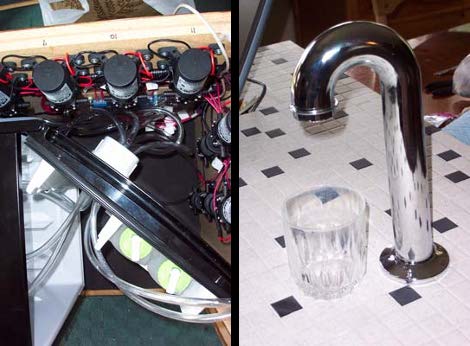
[John Creswell] built a heck of an automatic bartender in a kitchen island. The image on the left shows a top-down view of the inside of the cabinet. There’s a mini-fridge where the liquids are stored, and around the perimeter of the cabinet [John] mounted sixteen pumps to get the beverage up into your cup. Drinks are dispensed from the lighted serving fixture on the right by selecting your preferred cocktail from a computerized menu. According to his writeup the project was finished about five years ago, making us wonder if he’s tackled any upgrades such as adding support for smartphones.
[Thanks Zack]

